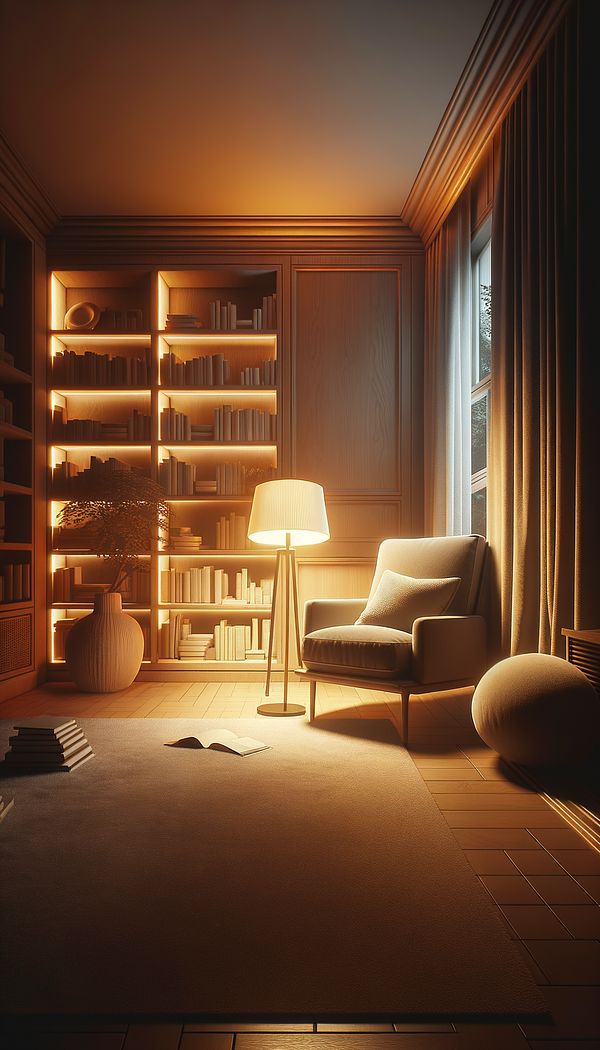What is Colour Temperature?
Colour temperature is a characteristic of visible light that has important applications in lighting, photography, videography, publishing, manufacturing, astrophysics, horticulture, and art.
Description
Colour temperature, often expressed in Kelvin (K), is a way to describe the light appearance emitted by a light source. It provides a warm, neutral, or cool hue to the space or object it illuminates. This concept is fundamental in interior design, as it significantly affects the mood, aesthetic appeal, and functionality of a space.
Warm colours (lower Kelvin numbers) evoke warmth and coziness but can make a space seem smaller. They range from red to yellowish-white in hue and are ideal for creating a welcoming and intimate atmosphere. On the other hand, cool colours (higher Kelvin numbers) offer clarity and brightness, making a space appear larger. These are typically bluish-white and are excellent for task lighting or promoting alertness.
Understanding colour temperature is vital for designers to create a desired ambiance in a space. It involves choosing the right lighting fixtures and their placement to enhance the overall design and functionality of the room. Additionally, knowledge of colour temperature is essential when selecting paint colours, textiles, and decorative elements to ensure they complement the lighting and achieve the intended design outcome.
Usage
In a cozy reading nook, a designer might opt for a lower Kelvin lamp, creating a warm and inviting atmosphere. Conversely, for a home office, a higher Kelvin light source could be chosen to stimulate concentration and alertness. Colour temperature also plays a crucial role in setting the mood in restaurants, where warm lights can make the dining experience more intimate, while cooler lights are used in fast-food establishments to encourage quick dining.
FAQs
-
How does colour temperature affect mood in interior design?
Colour temperature can significantly influence the mood and perception of a space. Warm lights tend to create a cozy, inviting atmosphere, encouraging relaxation and comfort. Cool lights, conversely, produce a more alert, focused environment, suitable for task-oriented spaces like offices or classrooms.
-
Can colour temperature impact the perceived size of a room?
Yes, the colour temperature of lighting can affect how we perceive the size of a room. Warm lighting can make a space feel smaller and more intimate, whereas cool lighting can make a room appear larger and more open.
-
What is the significance of the Kelvin scale in colour temperature?
The Kelvin scale measures the colour temperature of light sources. Lower Kelvin values represent warmer, yellowish light, while higher values indicate cooler, bluish light. This scale helps in selecting lighting that achieves the desired ambiance or functional needs of a space.
Practical Application
When choosing lighting for any interior space, consider the activities that take place there and the mood you wish to evoke. Use warmer lights for areas meant for relaxation and cooler lights for work or study areas. Don't forget to account for natural light entering the space and how it interacts with artificial lighting, as this can also affect the overall mood and functionality of the room.
-
Lighting111 articles
-
Decorative Techniques322 articles
-
Decorating Principles & Elements330 articles
-
Color & Patterns154 articles
-
BohemianBohemian is a design style that embodies a carefree, eclectic aesthetic with a focus on rich patterns and vibrant colors.
-
Wine TableA wine table is a small table designed specifically for holding wine bottles and sometimes glasses.
-
Project ManualA document that outlines the scope, standards, guidelines, and specifications of a design project.
-
CorniceA cornice is an ornamental molding that runs along the top of a wall or a building.
-
GradientA gradient is a gradual transition of color or texture.
